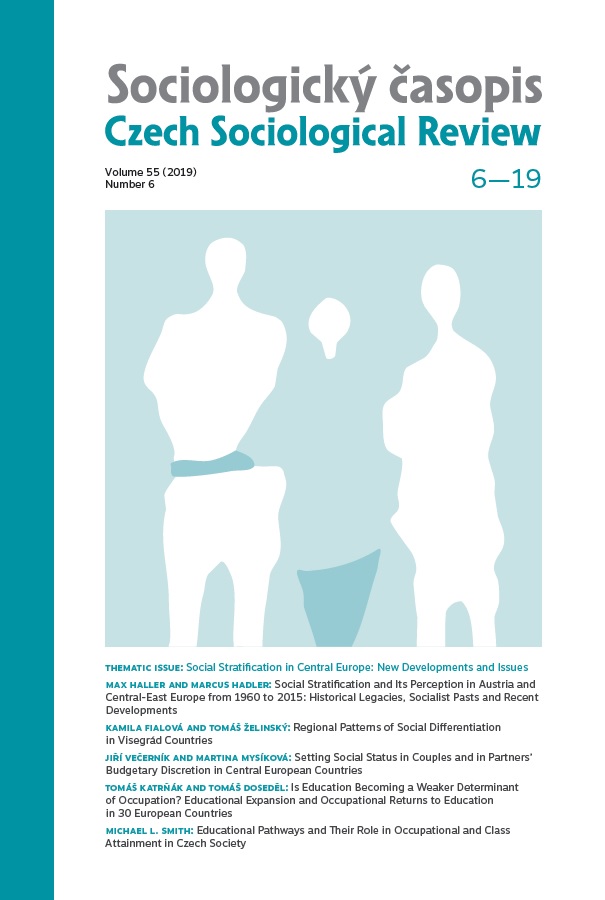Social Stratification and Its Perception in Austria and Central-East Europe from 1960 to 2015: Historical Legacies, Socialist Pasts and Recent Developments
Social Stratification and Its Perception in Austria and Central-East Europe from 1960 to 2015: Historical Legacies, Socialist Pasts and Recent Developments
Author(s): Max Haller, Markus HadlerSubject(s): Government/Political systems, International relations/trade, Social differentiation, Politics of History/Memory
Published by: AV ČR - Akademie věd České republiky - Sociologický ústav
Keywords: social stratification; inequality; Austria; state socialism; perception of inequality
Summary/Abstract: This article compares Austria with three of its former state-socialist neighbouring countries: the Czech Republic, Slovakia, and Hungary. The authors are guided by the assumption that it is necessary to analyse changes in both the structure and the perception of inequality and that the two are interconnected. They assume that some general differences exist as a result of the legacy of state socialism in the three post-communist countries, but also that significant differences exist between those three countries themselves that stem from their different paths of development in the 19th and early 20th centuries. In the first part of this article, differences in the societal-political aims of a Western country such as Austria and those of state-socialist countries are discussed. The authors argue that the state-socialist countries were able to contain income inequality but were less successful at limiting other aspects of inequality. Austria, on the other hand, was able to avoid the severe income inequalities of the capitalist system by introducing democratic-corporatist institutions and a strong welfare state. In the second part of the article the authors investigate the subjective perception of inequality based on the ISSP inequality surveys. The majority of the population in all four countries think that income differences are too large, but there are significant differences in how people perceive and evaluate the stratification structure: in Austria, individuals rank themselves significantly higher than do people in the other three countries and see their society as dominated by the middle classes. The opposite is true in Hungary, where most people think that they live in a society characterised by a small elite, and they see the mass of the people at the bottom.
Journal: Sociologický časopis / Czech Sociological Review
- Issue Year: 55/2019
- Issue No: 6
- Page Range: 697-733
- Page Count: 37
- Language: English

